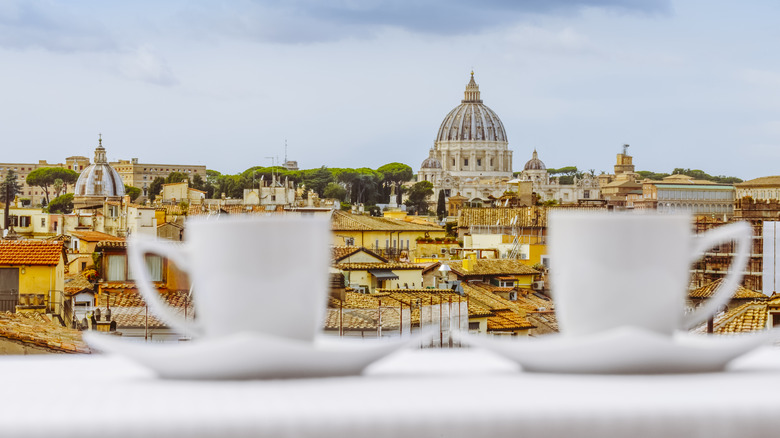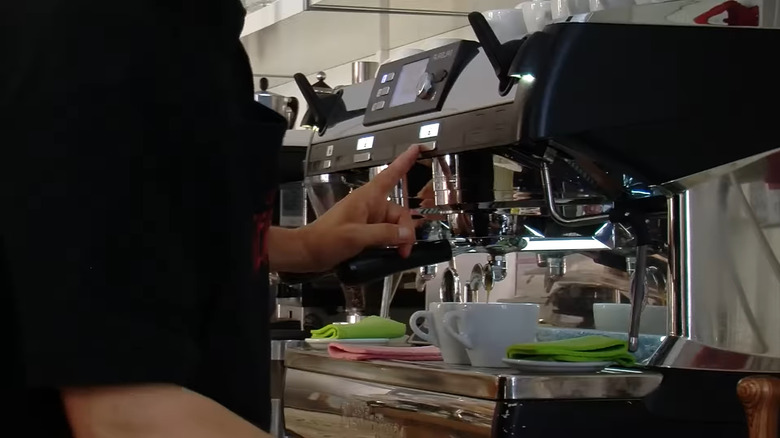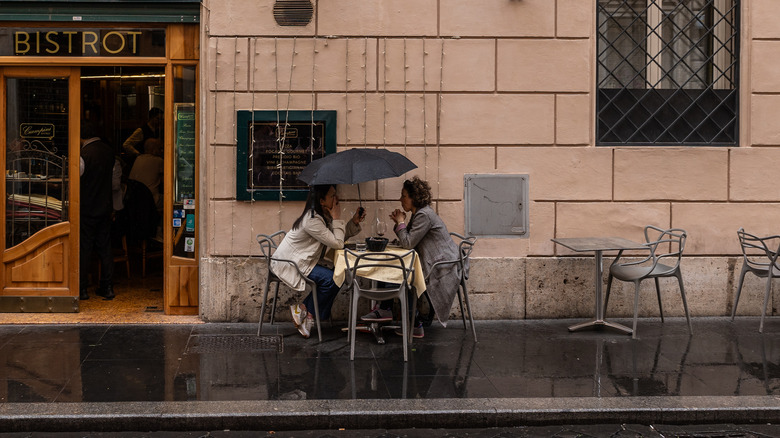One Of The Most Popular Coffee Orders In America Will Get You A Cup Of Milk In Italy
When you're visiting a little Italian cafe you may be tempted to order a latte. Unfortunately, instead of your favorite drink, you're probably going to end up with nothing but some weird looks and a cold glass of milk. Why? In Italian, "latte" just means milk.
You might have thought lattes are Italian, considering its name comes from the language. In some ways, they certainly have Italian origins, considering the first espresso machine came from Turin in the 1880s, and the first espresso shot with crema was pulled in 1940s Milan — but the modern latte as we know it was born in Seattle in the 1980s when baristas in Emerald City started coming up with ways to make latte art. While most cafes in Italy might not be able to make you the kind of latte you're thinking of, don't let that stop you from making Italy a destination on your European food lovers' tour, as there are plenty of classic Italian coffees that you will love, even if you're craving a latte.
What to order instead of a latte
As a seasoned traveler, you know not to order beverages like coffee on a flight, so by the time you arrive in Rome, you're more than ready to sit down in a beautiful cafe and have a good coffee. You can't order a latte, and you shouldn't ask for a piccolo, either — that's for when you're visiting Australia's island and coastal spots. Just like lattes, the Australian piccolo has an Italian name but isn't an Italian drink. So, what should you order in Italy?
The most obvious choice might be to just swap "latte" for "caffè latte," but if you really like the foam in a latte, you'll be disappointed since caffè lattes are just espresso with steamed milk. If it's just a cold, sweet drink you're missing, you might like a caffè freddo, which is an espresso, sugar, and ice. Your best option, though, is probably a cappuccino. You've probably had one before, but in Italy, they're extremely popular. Not only will they give you your coffee fix, they are an important part of Italian culinary culture, so you won't want to miss out.
As stated by the Istituto Nazionale Espresso Italiano, "A high quality cappuccino that abides by tradition is made of 25 ml espresso and 100 ml steam-foamed milk" but specialty cappuccinos may be a little different, and a little more like American lattes, in that they may have art on top of the foam.
Embracing Italian coffee culture
If you don't want to end up with a glass of milk, you're going to want to make sure you order correctly. There are a few differences between coffee culture in Italy and other parts of the world, so if you'd rather not stand out as a tourist, you'll want to be prepared. One thing to remember is that milky coffee drinks like cappuccinos are incredibly popular for breakfast, but it's rare to see someone order one in the afternoon. Instead, locals usually order caffè (aka espresso shots) to help them stay awake during that classic afternoon slump. Unlike in many American cafes, in general, you'll pay for your coffee after you've finished it the way you would for a sit-down meal.
You can use Rick Steves's tip for how to have authentic restaurant experiences while traveling for Italian cafes, too, by trying small local favorites over spots aimed at tourists. The way Italians make, serve, and drink coffee varies from city to city. For example, Turin is famous for a layered chocolatey drink called bicerin, while in Padua you can try patavina, a coffee with a hint of mint that has been popular there for 200 years. By the time your trip to Italy is over, you might not even miss lattes anymore.


